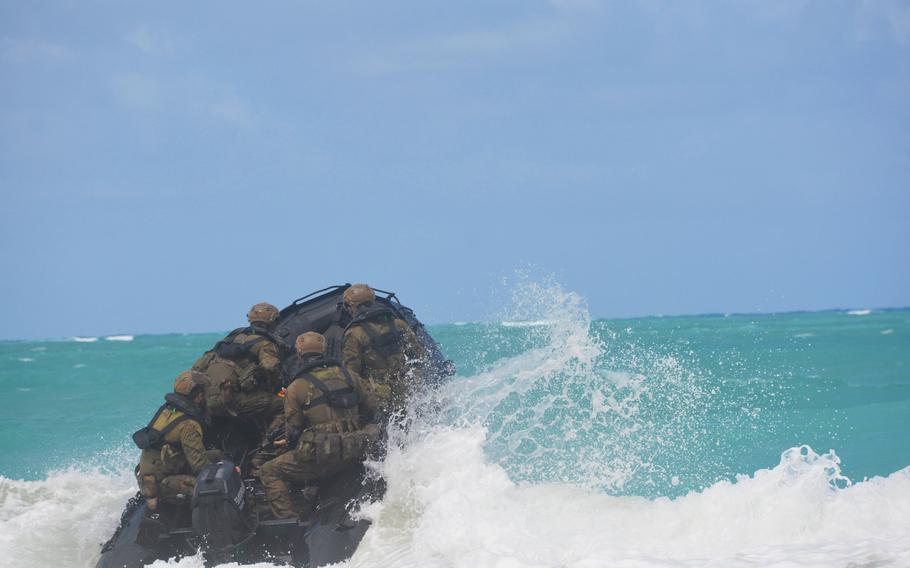
Soldiers with the Australian Army’s 2nd Battalion, Royal Australian Regiment crash through a wave aboard an inflatable dinghy as they head away from Bellows Air Force Base, Hawaii, July 18, 2022, during helocasting training. (Wyatt Olson/Stars and Stripes)
BELLOWS AIR FORCE BASE, Hawaii — While most of the troops participating in the Rim of the Pacific exercise in Hawaii headed out to sea drills last week, some soldiers and Marines have kept one foot on land.
This year’s RIMPAC is primarily centered on the 38 ships and four submarines taking part, but the massive exercise involving 25,000 personnel also includes troops from land forces from nine nations.
Media were invited on Monday to watch the first day of amphibious assault training by Australian soldiers and U.S. Marines at Bellows Air Force Base, which lies on the southeast tip of Oahu and is bounded on one side by a wide sandy beach.
Marines with the 3rd Reconnaissance Battalion and Australian soldiers with 2nd Battalion, Royal Australian Regiment, practiced helocasting over waters made exceedingly choppy by the remnants of a tropical cyclone grazing the state.
The drill included Australian soldiers launching inflatable F470 Zodiac dinghies from the beach into crashing waves. Once well away from shore, a Marine Corps CH-53E Super Stallion helicopter hovered near the inflatables as Marines disembarked during a series of sorties.
Battalion commander Lt. Col. Mark Tutton was unperturbed by the ocean churn.
“The sea state here is actually not too bad,” he told reporters while standing on the beach. “Today is fine; it's well within limits. It's not risky at all. It’s a routine training scenario.”
Meanwhile, not far inland on the base, U.S. Marines and troops from Tonga, Malaysia, Australia and Sri Lanka were training for urban close combat in three faux villages.
“It's really important because we don't have this kind of training environment back at home,” said Lt. Filise Siale, who was leading a platoon from His Majesty’s Armed Forces Royal Tongan Marines. “This is very complex for us to operate, especially for my platoon.”
RIMPAC concludes on Aug. 4.
olson.wyatt@stripes.com Twitter: @WyattWOlson